|
|
|
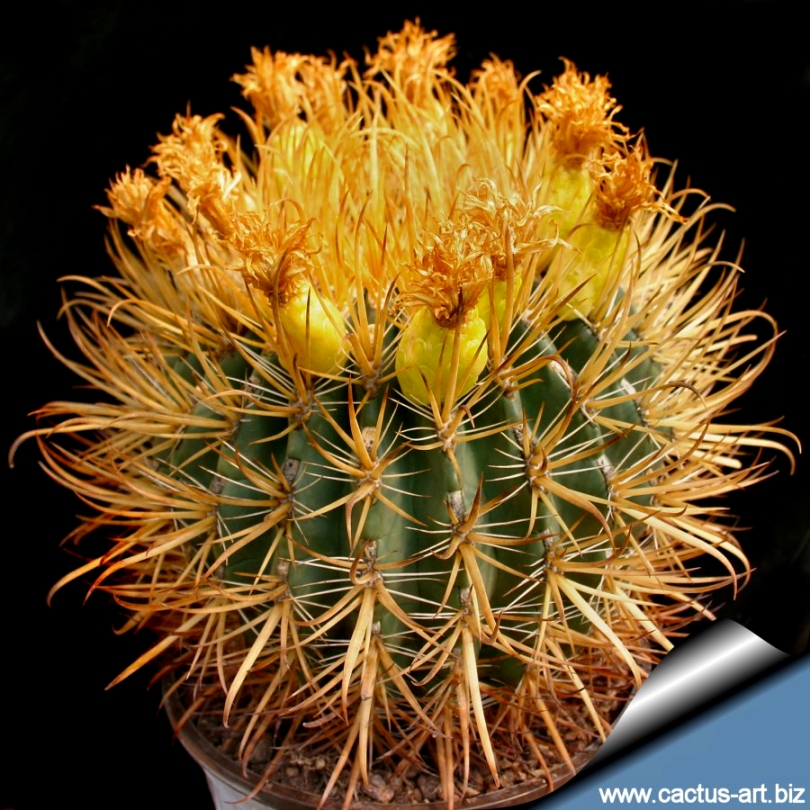
This is a somewhat slow-growing
species. The plant pictured above is about 18 years old and about 22cm
in diameter, although it has been flowering for several years.
Because of its beautiful golden spines and its
small stature, F. chrysacanthus makes a great collector's plant.
|
|
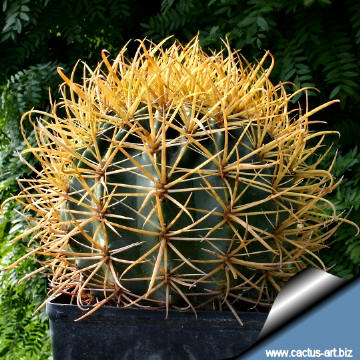 |
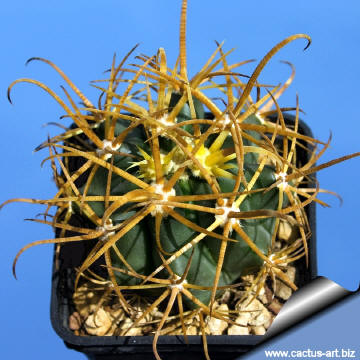 |
|
. |
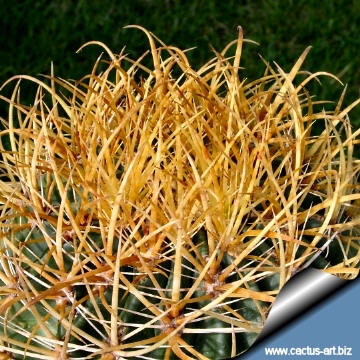 |
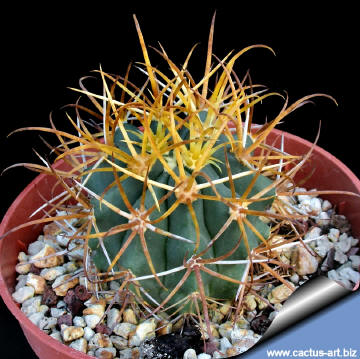 |
|
. |
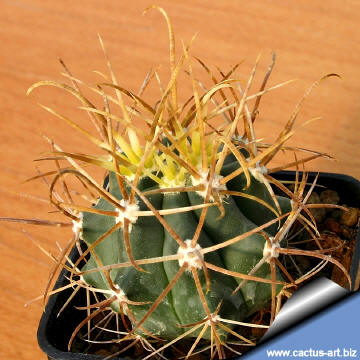 |
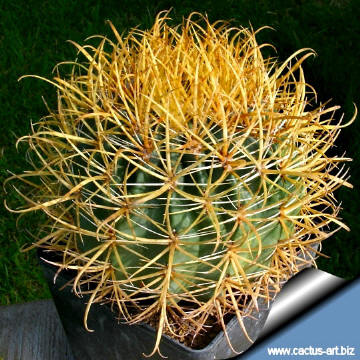 |
|
. |
|
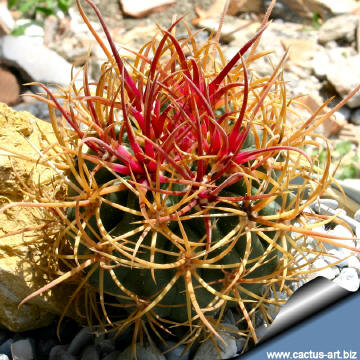
F.
chrysacanthus "Red spines" (hybrid) |
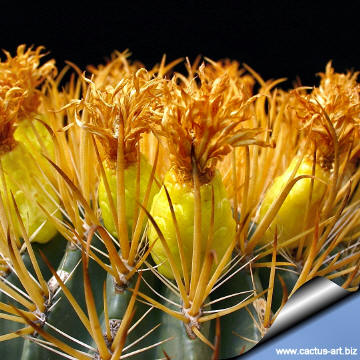
The fruits are bright yellow |
|


Advertising
|
|
|
|
|
Family:
Cactaceae (Cactus
Family)
Scientific name:
Ferocactus chrysacanthus (Orcutt) Britton & Rose
In: The Cactaceae; descriptions and illustrations of
plants of the cactus family 3: 127, 1922
Taxon
synonyms:
- Echinocactus chrysacanthus
- Ferocactus chrysacanthus ssp.
chrysacanthus Ferocactus chrysacanthus ssp. grandiflorus (G.E.
Lindsay) N.P. Taylor
In: Cactaceae Consensus
Initiatives 6: 15, 1998
- Echinocactus emoryi var. chrysacanthus
- Ferocactus fordii var. grandiflorus
Conservation status: Listed in
CITES appendix 2.
Origin:
Mexico (Baja California: Only occurs
naturally on the island of Cedros, off the west coast of northern Baja
California and possibly on a neighboring island, West San Benitos, with
some reports of it on the adjacent peninsula.)
Habitat: with a balanced and relatively high
average temperature, low rainfall but relatively high humidity and
specific soil composition (these conditions are difficult to imitate in
cultivation, and make this species relatively problematic to grow.
Cultivation:
It is often recommended to
graft young
seedlings on
Eriocereus jusbertii. But plants can grow on their own roots for
ages if watered carefully. |
|
Description: Solitary
barrel cactus. The plant is very densely spined (one of the spiniest of
the Ferocacti) and because of that, will tolerate full sun.
Stem: Globose to cylindrical, dark green.
up to 30cm in diameter, 90 cm tall.
Ribs: 13 to 22 ribs
Central spines: 4 to 10 all thick, twisted and more or less
hooked golden yellow (it sometimes occurs with red spines)
Radial spines: 4 to 6, white.
Flowers: They are typically yellow or brownish yellow, but also
orange, 2.5 cm long, 5 cm in diameter. The inside petals are yellow or
orange, the outside ones are brownish.
Blooming season: Summer.
Fruit: Yellow.
The subspecies 'chrysacanthus' has yellow or yellow-orange
flowers.
The subspecies 'grandiflorus' has red or red-orange
flowers.
|
|
|
|
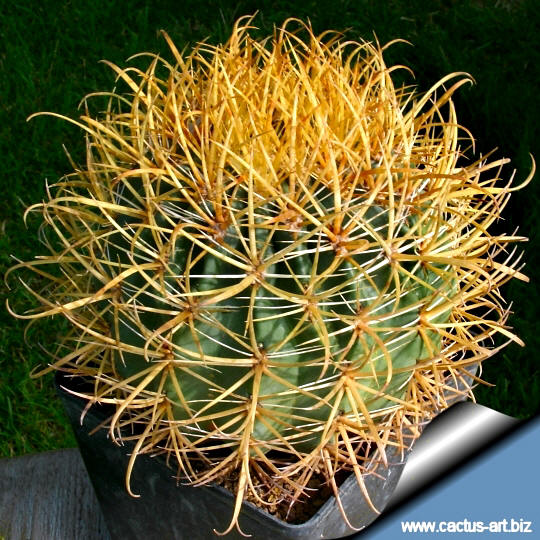
The species name "chrysacanthus"
comes from the Greek for "with golden spines" but sometimes occurs
with red spines
The plant is very densely spined and because of that, will tolerate
full sun.
|
|
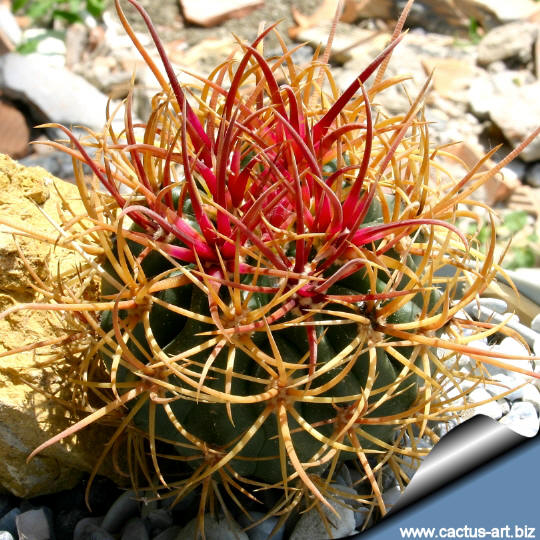
A rare
red spined
specimen (hybrid).
Cultivation:
Use very draining soil, water during the
aestival growth cycle (this plant need plenty of water) But it's
necessary to avoid wetting the bodies of these plants while they are in
sunlight. A wet cactus in the sun light can cause sun burning which can
lead to scars or even fungal infections and death. Needs full sun. Keep
dry at 10°C in winter, but it can tolerate sporadic light frost.
Propagation:
Seeds are the only way of
reproducing. The
seeds germinate readily.
Photo of conspecific taxa, varieties, forms and
cultivars of Ferocactus chrysacanthus:
|
|